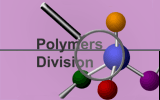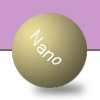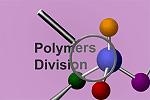| |
Nanocomposite Dental Materials
|
| |
Introduction
|
 |
| |
 Our
goal is to develop metrologies for characterizing polymeric
dental nanocomposites, which are of growing interest to the
dental community. The properties of these composites are
determined in large part by the filler-resin interface and the
degree of filler dispersion. The challenge is to develop suitable
metrologies for determining structure-property relationships
for the nano-sized filler phases and the interfacial phases
formed by resin-filler interactions. Our
goal is to develop metrologies for characterizing polymeric
dental nanocomposites, which are of growing interest to the
dental community. The properties of these composites are
determined in large part by the filler-resin interface and the
degree of filler dispersion. The challenge is to develop suitable
metrologies for determining structure-property relationships
for the nano-sized filler phases and the interfacial phases
formed by resin-filler interactions.
|
| |
Experimental Approach
|
 |
This project focuses on silica nanoparticle-filled polymeric
dental composites in which the silica nanoparticles have been
treated with two chemically different silane coupling agents.
The major objective of this project is to investigate the
effects of chemical structure variation of the nanoparticle
interfacial phase on critical composite properties including
the quality of filler dispersion in polymeric matrices.
|
 |
Our approach is to vary the ratio of reactive and non-reactive
silane coupling agents on the silica nanoparticles and determine
the effects on critical composite properties:
|
strength
modulus
vinyl conversion
uncured paste processability
|
| |
Results
|
 |
| |
1. Improved the processability
of uncured composite pastes by using blends of reactive
and non-reactive silane coupling agents.
2. Maintained or improved the strength and modulus of
composites compared to composites containing silica silanized
with only the reactive silane, MPTMS, by using dual-silanized
silica nanoparticles (5 % MPTMS: 5 % OTMS)
3. Increased the modulus of the composites by using aromatic
silane interfacial phases rather than aliphatic silanes.
4. Observed little to no effect of interfacial chemistry
on methacrylate conversion after photo-polymerization.
|

|
|
| |
Future Activities
|
 |
Develop metrologies for characterizing the processability
of uncured composite pastes
Employ combinatorial methods for high-throughput screening
of polymer matrix-silane coupling agent interactions
Measure vinyl conversion using Raman spectrometry and compare
to conversions obtained by Near-IR
|
| |
Publications
|
 |
Wilson, K.S.; Zhang, K.; Antonucci, J.M. “Systematic
Variation of the Interfacial Chemistry in Dental Nanocomposites”
submitted to Biomaterials.
Wilson, K.S.; Antonucci, J.M. “Structure-Property Relationships
of Thermoset Methacrylate Composites for Dental Materials:
Study of the Interfacial Phase of Silica Nanoparticle-Filled
Composites” Polymer Preprints 2004, 45(2), 335-336.
|
| |
Contributors
|
 |
Kristen Wilson
Joseph Antonucci
Elizabeth Wilder
Da-Wei Liu
|
| |
| |
| |
| |
| |
| |
| |












